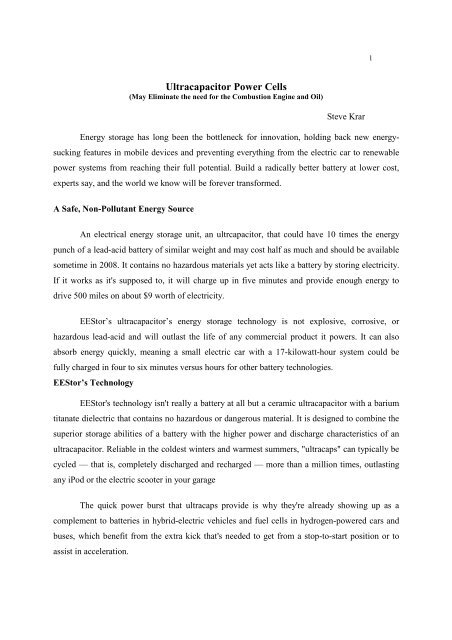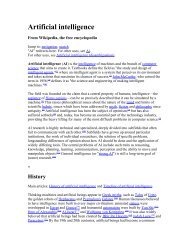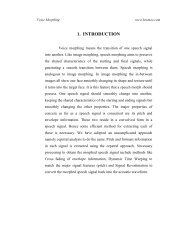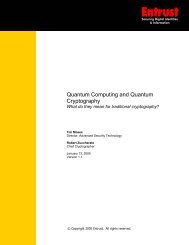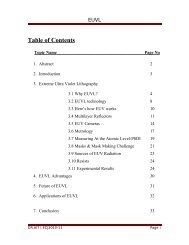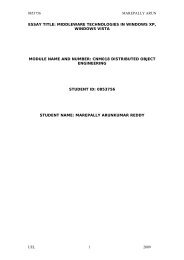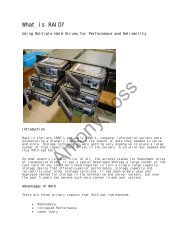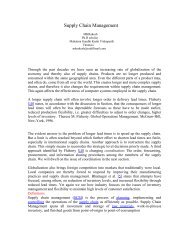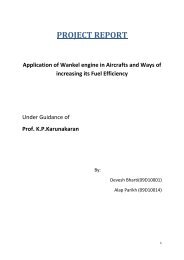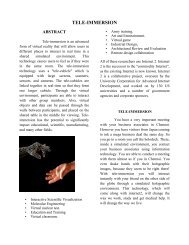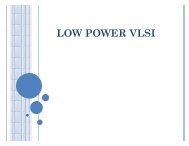Ultra Capacitor Hybrid Energy.pdf - 123SeminarsOnly
Ultra Capacitor Hybrid Energy.pdf - 123SeminarsOnly
Ultra Capacitor Hybrid Energy.pdf - 123SeminarsOnly
You also want an ePaper? Increase the reach of your titles
YUMPU automatically turns print PDFs into web optimized ePapers that Google loves.
<strong>Ultra</strong>capacitor Power Cells<br />
(May Eliminate the need for the Combustion Engine and Oil)<br />
Steve Krar<br />
<strong>Energy</strong> storage has long been the bottleneck for innovation, holding back new energy-<br />
sucking features in mobile devices and preventing everything from the electric car to renewable<br />
power systems from reaching their full potential. Build a radically better battery at lower cost,<br />
experts say, and the world we know will be forever transformed.<br />
A Safe, Non-Pollutant <strong>Energy</strong> Source<br />
An electrical energy storage unit, an ultrcapacitor, that could have 10 times the energy<br />
punch of a lead-acid battery of similar weight and may cost half as much and should be available<br />
sometime in 2008. It contains no hazardous materials yet acts like a battery by storing electricity.<br />
If it works as it's supposed to, it will charge up in five minutes and provide enough energy to<br />
drive 500 miles on about $9 worth of electricity.<br />
EEStor’s ultracapacitor’s energy storage technology is not explosive, corrosive, or<br />
hazardous lead-acid and will outlast the life of any commercial product it powers. It can also<br />
absorb energy quickly, meaning a small electric car with a 17-kilowatt-hour system could be<br />
fully charged in four to six minutes versus hours for other battery technologies.<br />
EEStor’s Technology<br />
EEStor's technology isn't really a battery at all but a ceramic ultracapacitor with a barium<br />
titanate dielectric that contains no hazardous or dangerous material. It is designed to combine the<br />
superior storage abilities of a battery with the higher power and discharge characteristics of an<br />
ultracapacitor. Reliable in the coldest winters and warmest summers, "ultracaps" can typically be<br />
cycled — that is, completely discharged and recharged — more than a million times, outlasting<br />
any iPod or the electric scooter in your garage<br />
The quick power burst that ultracaps provide is why they're already showing up as a<br />
complement to batteries in hybrid-electric vehicles and fuel cells in hydrogen-powered cars and<br />
buses, which benefit from the extra kick that's needed to get from a stop-to-start position or to<br />
assist in acceleration.<br />
1
An electrical-energy-storage unit (EESU) has as a basis material a high-permittivity<br />
composition-modified barium titanate ceramic powder. This powder is double coated with the<br />
first coating being aluminum oxide and the second coating calcium magnesium alumina-silicate<br />
glass. The components are arranged into a multilayer array with the use of a solder-bump<br />
technique as the enabling technology so as to provide a parallel configuration of components that<br />
has the capability to store electrical energy in the range of 52 kWh. The total weight of an EESU<br />
with this range of electrical energy storage is about 336 pounds.<br />
The ultracapacitor (battery) charges in minutes while to charge a battery usually take<br />
hours. With lead acid batteries you might get lucky to have 500 to 700 recharge cycles, the<br />
EEStor technology has been tested up to a million cycles with no material degradation.<br />
Foreseeable Uses<br />
Imagine the day when cellphones charge up in seconds, laptop batteries never degrade,<br />
and electric cars have the same power, driving range and purchase price as their gas-powered<br />
cousins. It's a consumer's dream and an engineer's fantasy: Safe, affordable and eco-friendly<br />
batteries that can store immense amounts of energy, allow for lightning-fast charging, and handle<br />
virtually unlimited discharging with little affect on quality.<br />
EEStor's technology could be used in more than low-speed electric vehicles. The<br />
company envisions using it for full-speed pure electric vehicles, hybrid-electrics (including plug-<br />
ins), military applications, backup power and even large-scale utility storage for intermittent<br />
renewable power sources such as wind and solar.<br />
The EEStor technology has been tested up to a million cycles with no material<br />
degradation compared to lead acid batteries that optimistically have 500 to 700 recharge cycles,<br />
Because it's a solid state battery rather than a chemical battery, such being the case for lithium ion<br />
technology, there would be no overheating and thus safety concerns with using it in a vehicle.<br />
<strong>Ultra</strong>capacitor Advantages<br />
2
The electrical energy storage unit can pack nearly 10 times the energy of a lead-acid<br />
battery of similar weight and cost half as much.<br />
The cost of the engine itself depends on how much energy it can store; an EEStor-<br />
powered engine with roughly equivalent to that of a gasoline-powered car would cost<br />
about $5,200. A slight premium over the cost of the gas engine and the other parts the<br />
device would replace -- the gas tank, exhaust system, and drivetrain. Getting rid of the<br />
need to buy gas should more than make up for the extra cost of an EEStor-powered car.<br />
A number of these ceramic batteries could be used at "electrical energy stations" where<br />
people on the road could charge up. The power burst that ultracaps provide can assist<br />
with stop-start acceleration, and the energy is more efficiently recaptured through<br />
regenerative braking<br />
By some estimates, it would only require $9 worth of electricity for an EESU-powered<br />
vehicle to travel 500 miles, versus $60 worth of gasoline for a combustion-engine car.<br />
Millions of Recharges<br />
Solid-state devices that use ultracapacitors recharge in minutes as compared to the<br />
conventonal battery which tabe as much as 6 hours.<br />
An ultracapacitor can be charged/discharged a million times or more without significant<br />
degradation of its performance.<br />
The operating range for EESUs is minus 20 Celsius (minus 4 Fahrenheit) and 65 C (149<br />
F), Lithium ion, nickel metal hydride and lead acid batteries [are] all significantly<br />
challenged at extreme temperatures<br />
3


